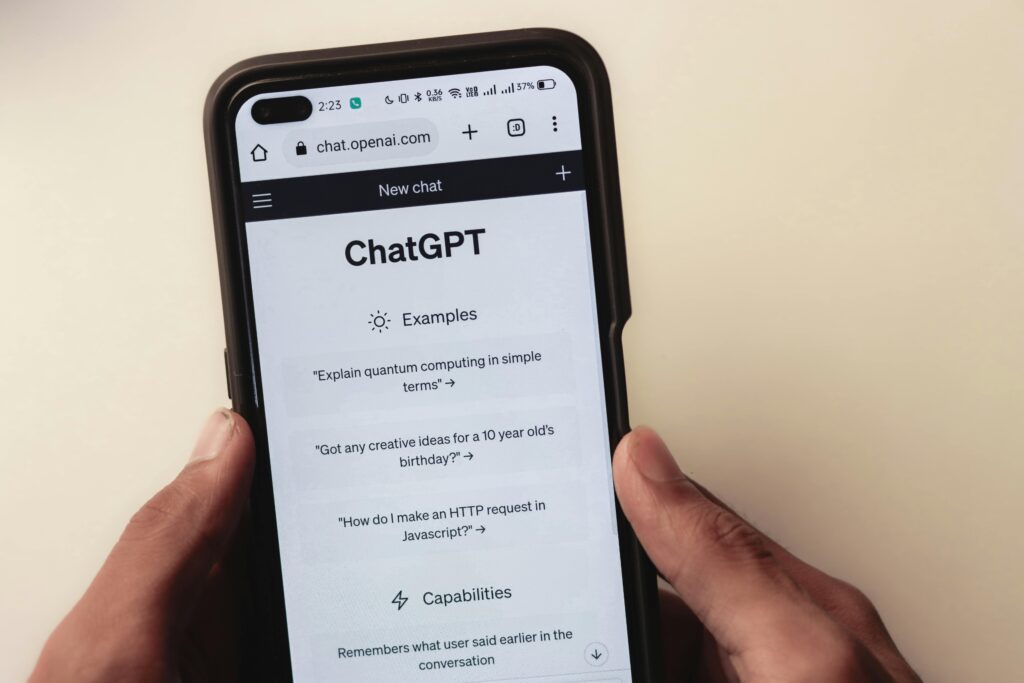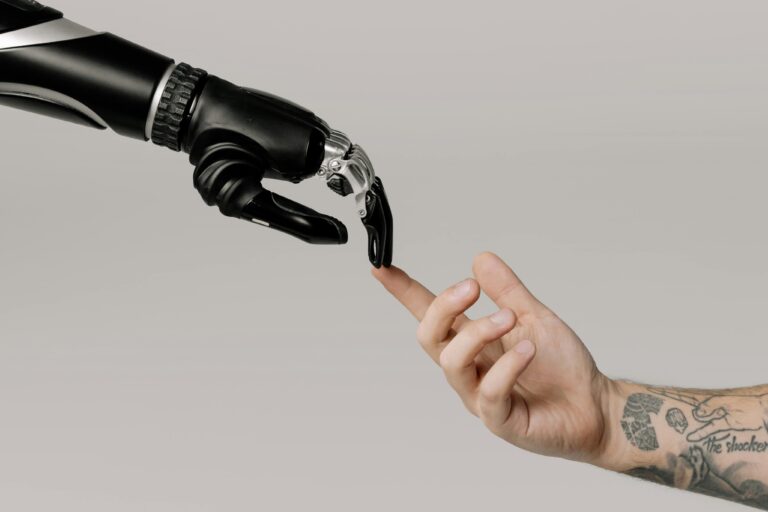🧠 What Is Machine Learning and How Does ChatGPT Actually Work?
When I first heard about machine learning, I imagined a robot sitting at a desk, flipping through textbooks, learning just like we do. Turns out, it’s a bit more complicated than that — and a lot more fascinating.
Today, I want to break down what machine learning really is and how tools like ChatGPT (yes, the very AI you might be using!) actually function. Let’s keep it clear, factual, and maybe even a little fun.
Table of Contents
🔍 So, What Is Machine Learning?
At its core, machine learning (ML) is a branch of artificial intelligence (AI) that allows computers to “learn” from data without being explicitly programmed.
Instead of giving a computer a set of rigid instructions, we give it lots of data and let it find patterns, make decisions, or generate predictions.
Here’s a simple way I think of it:
Traditional programming = Rules → Data → Answers
Machine Learning = Data + Answers → Rules
Let’s say you want to train a system to recognize cats in images. With traditional programming, you’d write lines of code: “If it has whiskers, triangle ears, and four legs, it might be a cat.” But in machine learning, you simply show it thousands of labeled cat images, and the system learns the patterns itself.
Cool, right? 🐱
🧠 Types of Machine Learning
There are three major types:
- Supervised Learning: The system learns from labeled data (e.g., photos marked “cat” or “dog”).
- Unsupervised Learning: The system looks for patterns in unlabeled data (e.g., customer shopping habits).
- Reinforcement Learning: The system learns by trial and error, like training a dog with rewards and punishments. ChatGPT actually uses a version of this!
💬 Enter ChatGPT: The Star of Conversational AI
So where does ChatGPT fit into all of this?
ChatGPT is built on a Large Language Model (LLM) developed by OpenAI called GPT (Generative Pretrained Transformer). I know — it’s a mouthful. Let’s break that down.

🚀 How ChatGPT Actually Works
Step 1: Pretraining
During this stage, GPT is fed massive amounts of text data — books, websites, Wikipedia, Reddit conversations, and more. The model learns grammar, facts, reasoning patterns, and associations between words.
It doesn’t “understand” the content like humans do. Instead, it learns to predict what word comes next in a sentence based on context. That’s it.
For example, if I write: “Gravity is a force that…”
GPT might predict the next word should be “pulls,” “attracts,” or “acts.” The more training data it sees, the better its predictions become.
Step 2: Fine-Tuning
After pretraining, the model is further fine-tuned on specific tasks — like conversation, instruction following, or polite responses. This step makes GPT more useful and less wild.
It’s kind of like teaching a genius toddler some manners and structure after it’s read all the books in the world.
Step 3: Reinforcement Learning from Human Feedback (RLHF)
This is where human trainers rank multiple responses GPT gives to a prompt. The model is then taught to prefer better-ranked outputs.
So when you ask, “What’s the capital of France?” GPT won’t ramble — it will answer: “Paris,” because it’s learned what humans consider helpful and correct.
🤖 Does ChatGPT Think or Understand?
Not really.
GPT doesn’t “think” or “know” anything. It doesn’t have feelings, beliefs, or consciousness. It predicts words based on probability and patterns it learned from training data.
But because it’s seen such a wide range of human language, it can mimic understanding and generate coherent, useful answers. That’s what makes it seem intelligent — but it’s still pattern recognition under the hood.
🧩 Why Does It Sometimes Hallucinate?
Ever notice ChatGPT making stuff up?
That’s called a “hallucination” in AI. Since the model is just predicting the next best word, sometimes it confidently generates false information. It doesn’t lie — it just doesn’t always know what’s true or false.
This is why human oversight and fact-checking are still essential when using AI tools.
Great follow-up! Let’s enhance the blog with an extra section on ChatGPT hallucination and suggest additional related blog topics to expand your content cluster on AI and machine learning.
🧠 BONUS: Can We Stop ChatGPT From Hallucinating?
This question pops up a lot — and trust me, I’ve asked it too.
When ChatGPT hallucinates, it means it’s confidently generating false or made-up information. This happens because the model is guessing the next word based on patterns, not verifying truth.
🛠 So, how can we reduce hallucinations?
Here’s what helps:
- Use Specific Prompts
Vague questions = vague answers. Try to be as clear and precise as possible.
❌ “Tell me about history”
✅ “Summarize the causes of World War I in under 100 words”
- Ask for Sources
GPT can’t browse the web (unless specifically connected), but asking “What are your sources?” helps it respond more cautiously. - Double-Check Facts
Always fact-check important outputs — especially for health, legal, historical, or technical data. - Use GPT-4 Instead of GPT-3.5
GPT-4 is significantly more accurate and less likely to hallucinate. - RAG (Retrieval-Augmented Generation)
Developers and companies now pair ChatGPT with external databases so it pulls real facts from trusted sources. It’s like giving GPT a fact-checking sidekick. This is how tools like Perplexity and ChatGPT’s “browse with Bing” work.
Bottom line: hallucination is part of the nature of language models. But with good prompting, up-to-date data, and human judgment, we can minimize mistakes and make AI work with us, not against us.
⚙️ How Does It Work So Fast?
Behind the scenes, GPT runs on supercomputers filled with thousands of GPUs. These machines process huge neural networks — often with hundreds of billions of parameters (adjustable values the model learns from data).
So when you ask a question, the AI runs your input through this gigantic model and generates a response in a few seconds. Magic? Almost. ✨
🎯 Final Thoughts
Understanding machine learning and how ChatGPT works has changed the way I view tech. It’s not magic. It’s math, data, and a ton of engineering genius.
So next time you’re chatting with an AI — whether it’s generating code, answering questions, or writing this kind of blog — remember: it’s just a tool trained on words. Powerful? Absolutely. But it’s still up to us to use it wisely.
🧠 Stay curious. The future is being written — one token at a time.
✍️ – S.D., TheCuriosityGrid.com






